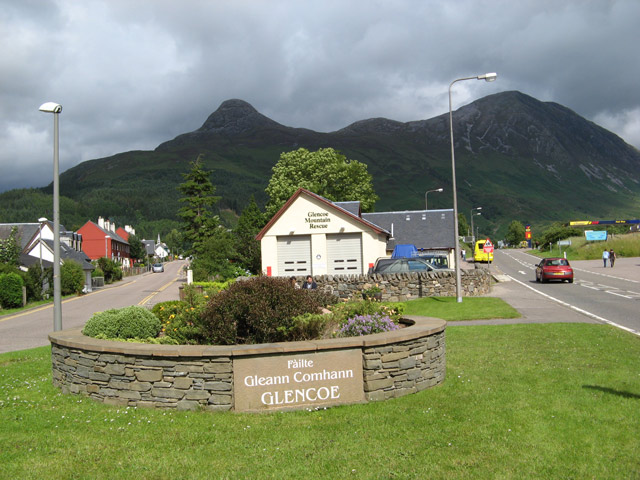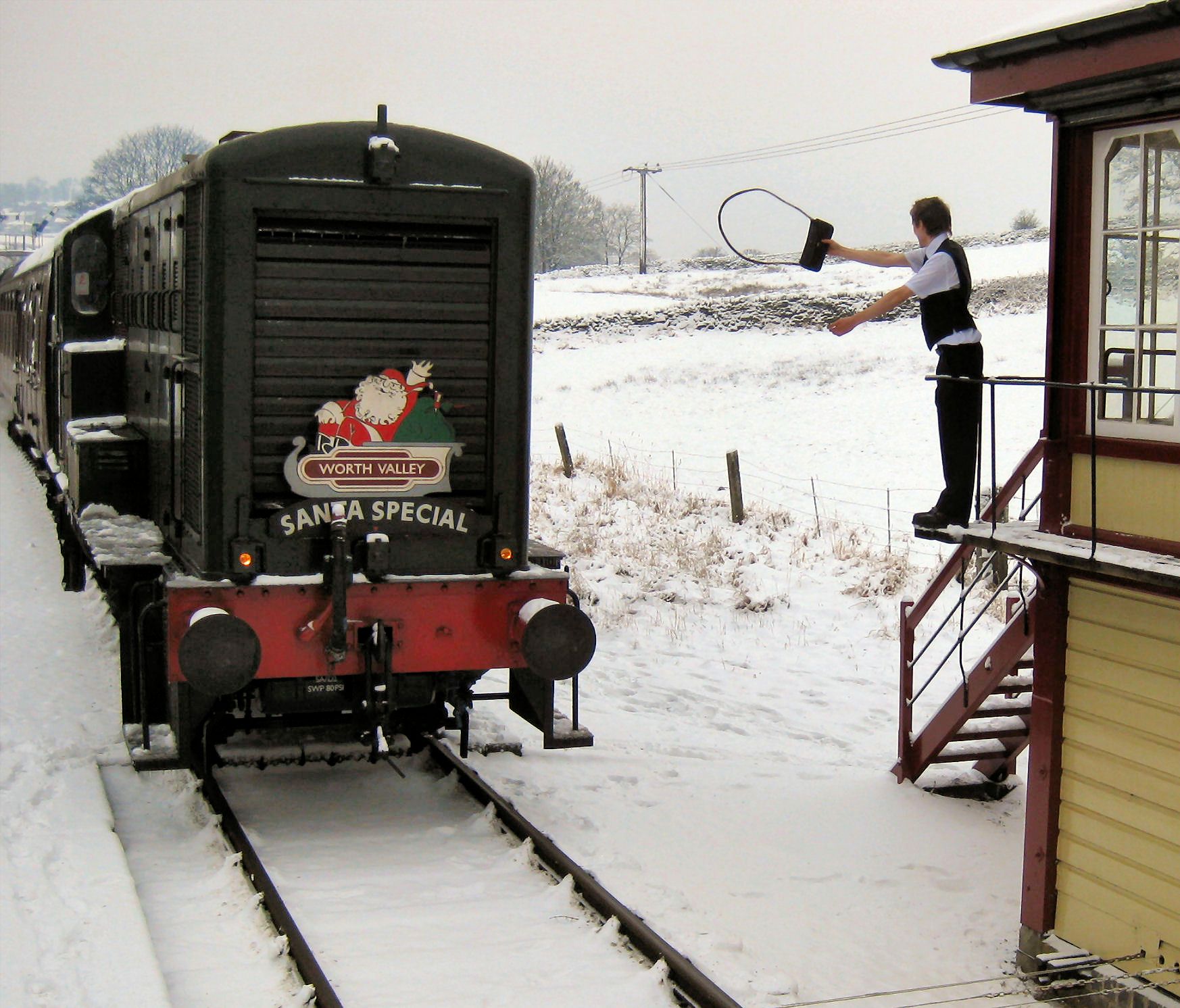|
Ballachulish Railway Station
Ballachulish was a railway station at Ballachulish on the southern shore of Loch Leven at East Laroch (south Ballachulish) in Highland. It was the terminus of the Ballachulish branch line that linked to the main line of the Callander and Oban Railway at Connel Ferry. History This station opened as Ballachulish on 24 August 1903Butt (1995), page 23 with two platforms. There was a goods yard on the north side of the station. Within two years it was renamed as Ballachulish & Glencoe and renamed again following the opening of the 'new' road between Glencoe Village and Kinlochleven in 1908 as Ballachulish (Glencoe) for Kinlochleven. Apart for a short closure in 1953, this latter name remained until closure in 1966. In the railway timetables the name was shortened to simply Ballachulish with a note stating "Ballachulish is the Station for Glencoe and Kinlochleven". The station was opened by the Callander and Oban Railway, which was absorbed into the London, Midland and Scott ... [...More Info...] [...Related Items...] OR: [Wikipedia] [Google] [Baidu] |
Glencoe, Highland
Glencoe or Glencoe Village ( Gaelic: ''A’ Chàrnaich'') is the main settlement in Glen Coe in the Lochaber area of the Scottish Highlands. It lies at the north-west end of the glen, on the southern bank of the River Coe where it enters Loch Leven (a salt-water loch off Loch Linnhe). The village falls within the Ross, Skye and Lochaber part of the Highland council area for local government purposes. It is part of the registration county of Argyll and the lieutenancy area of Inverness for ceremonial functions. The use of the term "Glencoe Village" is a modern one, to differentiate the settlement from the glen itself. History The village is on the site of the Massacre of Glencoe in 1692, in which 38 members of the Clan MacDonald of Glencoe were killed by forces acting on behalf of the government of King William III following the Glorious Revolution. Treachery was involved, since the Clan had fed the soldiers and given them shelter for nearly two weeks before they turned ... [...More Info...] [...Related Items...] OR: [Wikipedia] [Google] [Baidu] |
Railways Act 1921
The Railways Act 1921 ( 11 & 12 Geo. 5. c. 55), also known as the Grouping Act, was an act of Parliament enacted by the British government, and was intended to stem the losses being made by many of the country's 120 railway companies, by "grouping" them into four large companies, dubbed the " Big Four". The system of the "Big Four" lasted until the nationalization of the railways in 1947. During World War I, the British government took control, although not ownership, of British railways. The intention was to reduce inefficient internal competition between railway companies, and retain some of the benefits which the country had derived from a government-controlled railway system during the war. The provisions of the act took effect from the start of 1923. History The British railway system had been built up by more than a hundred railway companies, large and small, and often, particularly locally, in competition with each other. The parallel railways of the East Midlands, and ... [...More Info...] [...Related Items...] OR: [Wikipedia] [Google] [Baidu] |
Beeching Closures In Scotland
Beeching is an English surname. It is either a derivative of the old English ''bece'', ''bæce'' "stream", hence "dweller by the stream" or of the old English ''bece'' "beech-tree" hence "dweller by the beech tree".''Oxford Dictionary of English Surnames'', Reaney & Wilson, Oxford University Press 2005 People called Beeching include:- * Henry Beeching (1859–1919) clergyman, author and poet * Jack Beeching (John Charles Stuart Beeching) (1922–2001), British poet * Richard Beeching (1913–1985), chairman of British Railways * Thomas Beeching (1900–1971), English soldier and cricketer * Vicky Beeching (Victoria Louise Beeching) (born 1979), British-born Christian singer See also * Beeching Axe, informal name for the report "The Reshaping of British Railways" References {{surname English-language surnames ... [...More Info...] [...Related Items...] OR: [Wikipedia] [Google] [Baidu] |
Railway Stations In Great Britain Closed In 1966
Rail transport (also known as train transport) is a means of transport using wheeled vehicles running in tracks, which usually consist of two parallel steel rails. Rail transport is one of the two primary means of land transport, next to road transport. It is used for about 8% of passenger and freight transport globally, thanks to its energy efficiency and potentially high speed.Rolling stock on rails generally encounters lower frictional resistance than rubber-tyred road vehicles, allowing rail cars to be coupled into longer trains. Power is usually provided by diesel or electric locomotives. While railway transport is capital-intensive and less flexible than road transport, it can carry heavy loads of passengers and cargo with greater energy efficiency and safety. Precursors of railways driven by human or animal power have existed since antiquity, but modern rail transport began with the invention of the steam locomotive in the United Kingdom at the beginning of the 19th ... [...More Info...] [...Related Items...] OR: [Wikipedia] [Google] [Baidu] |
Signal Box
A signal is both the process and the result of transmission of data over some media accomplished by embedding some variation. Signals are important in multiple subject fields including signal processing, information theory and biology. In signal processing, a signal is a function that conveys information about a phenomenon. Any quantity that can vary over space or time can be used as a signal to share messages between observers. The '' IEEE Transactions on Signal Processing'' includes audio, video, speech, image, sonar, and radar as examples of signals. A signal may also be defined as observable change in a quantity over space or time (a time series), even if it does not carry information. In nature, signals can be actions done by an organism to alert other organisms, ranging from the release of plant chemicals to warn nearby plants of a predator, to sounds or motions made by animals to alert other animals of food. Signaling occurs in all organisms even at cellular level ... [...More Info...] [...Related Items...] OR: [Wikipedia] [Google] [Baidu] |
Token (railway Signalling)
In railway signalling, a token is a physical object which a train driver is required to have or see before entering onto a particular section of single track. The token is clearly endorsed with the names of the section to which it belongs. A token system is more commonly used for single lines because of the greater risk of collision in the event of a mistake being made by a signaller or traincrew than on double lines. Principle The operation of a bidirectional single track line has the hazard of two trains colliding. The simplest way to prevent such collisions is to have only one train in the section at any given time. Such a system is known as "one-engine-in-steam” (OES) or “one-train working" (OTW). This system is used on some branches of rail networks, and on heritage railways. The main disadvantage is that it restricts the number of train movements that can be made. For a larger railway system, it becomes exceptionally limiting in the level of operations that it all ... [...More Info...] [...Related Items...] OR: [Wikipedia] [Google] [Baidu] |
Railway Signalling
Railway signalling (), or railroad signaling (), is a system used to control the movement of railway traffic. Trains move on fixed rails, making them uniquely susceptible to collision. This susceptibility is exacerbated by the enormous weight and inertia of a train, which makes it difficult to quickly stop when encountering an obstacle. In the UK, the Regulation of Railways Act 1889 introduced a series of requirements on matters such as the implementation of interlocked block signalling and other safety measures as a direct result of the Armagh rail disaster in that year. Most forms of train control involve movement authority being passed from those responsible for each section of a rail network (e.g. a signalman or stationmaster) to the train crew. The set of rules and the physical equipment used to accomplish this determine what is known as the ''method of working'' (UK), ''method of operation'' (US) or ''safe-working'' (Aus.). Not all these methods require the use of p ... [...More Info...] [...Related Items...] OR: [Wikipedia] [Google] [Baidu] |
British Railways Board
The British Railways Board (BRB) was a State ownership, nationalised industry in the United Kingdom that operated from 1963 to 2001. Until 1997, it was responsible for most railway services in History of rail transport in Great Britain 1995 to date#Reform under the Labour government (1997–2010), Great Britain, trading under the brand name British Railways and, from 1965, British Rail. It did not operate railways in Northern Ireland, where railways were the responsibility of the Executive Committee of the Privy Council of Northern Ireland, Government of Northern Ireland. It is a statutory corporation, which when operating consisted of a chairman and nine to fifteen other members appointed by the Secretary of State for Transport. The Board, now reduced to a minimum membership of a chairman and one other member, continues to exist to hold the France, French law benefits and obligations of the Channel Tunnel Rail Usage Contract. Formation The BRB was created on 1 January 1963 unde ... [...More Info...] [...Related Items...] OR: [Wikipedia] [Google] [Baidu] |
Nationalisation
Nationalization (nationalisation in British English) is the process of transforming privately owned assets into public assets by bringing them under the public ownership of a national government or state. Nationalization contrasts with privatization and with demutualization. When previously nationalized assets are privatized and subsequently returned to public ownership at a later stage, they are said to have undergone renationalization (or deprivatization). Industries often subject to nationalization include telecommunications, electric power, fossil fuels, railways, airlines, iron ore, media, postal services, banks, and water (sometimes called the commanding heights of the economy), and in many jurisdictions such entities have no history of private ownership. Nationalization may occur with or without financial compensation to the former owners. Nationalization is distinguished from property redistribution in that the government retains control of nationalized property. S ... [...More Info...] [...Related Items...] OR: [Wikipedia] [Google] [Baidu] |
Scottish Region Of British Railways
The Scottish Region (ScR) was one of the six regions created on British Railways (BR) and consisted of ex-London, Midland and Scottish Railway (LMS) and ex-London and North Eastern Railway (LNER) lines in Scotland. It existed from the creation of BR in 1948, and was renamed to ScotRail (British Rail), ScotRail in the mid-1980s (see separate entity for details). History World War II had seriously disrupted Scotland's railways due to the LMS and LNER rolling stock in Scotland being transferred to the major cities in Northern England in order to replace what had been destroyed by Germany, German air-raids. At the time, the Government believed that only state intervention could provide the necessary re-supplying of rolling stock and save several unprofitable routes from closure. Following the election of the Labour Party (UK), Labour government in 1945, the railways were nationalised on 1 January 1948 under the terms of the Transport Act 1947. Through the creation of the Scottish ... [...More Info...] [...Related Items...] OR: [Wikipedia] [Google] [Baidu] |





